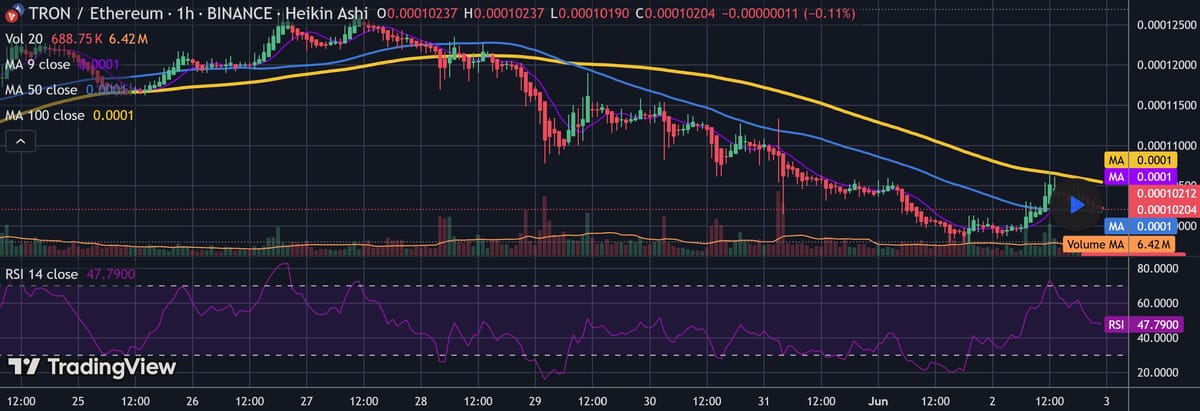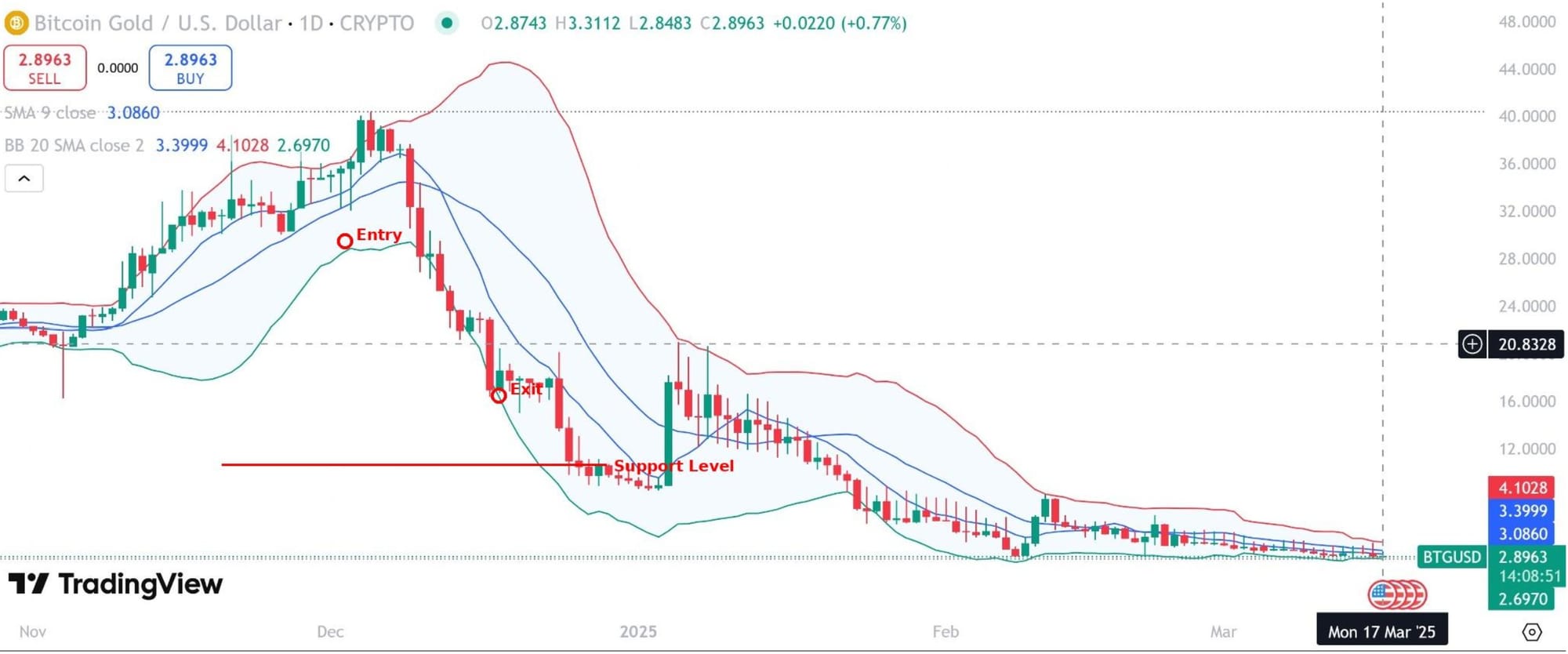Crypto Swing Trading vs. Day Trading: Which One is Better?
Should you choose day trading or swing trading? Both offer profit opportunities but require different skills and risk levels. This guide breaks down key differences, pros & cons, and essential tools to help you decide the best crypto trading strategy for your goals.

Many traders enter the crypto market with one question in mind: Should you choose day trading or swing trading? Both strategies offer profit opportunities, but they require different skill sets, risk tolerance, and time commitments.
Day trading involves making multiple trades within a single day, capitalizing on short-term price movements. In contrast, swing trading crypto focuses on holding positions for days or weeks, aiming to profit from broader market trends.
Choosing the best crypto trading style depends on trading goals, available time, and experience level. Understanding day trading vs. swing trading can help determine which strategy aligns best with financial objectives.
This guide will break down the key differences, pros, and cons of both approaches, while also highlighting the best tools to help traders succeed.
What is Day Trading?

Day trading is a trading style where positions are opened and closed within the same day to capitalize on short-term price movements. Unlike swing trading crypto, day trading requires constant monitoring of the market, as traders execute multiple trades within hours or even minutes.
Key features of day trading
- High-frequency trades. Multiple buy and sell orders within a single day.
- Short-term price speculation. Profits rely on small market fluctuations.
- Technical analysis-driven. Uses indicators like RSI, MACD, and Bollinger Bands.
- Leverage and margin trading. Some traders use leverage to maximize profits, but this also increases risks.
- Strict risk management. Requires stop-loss strategies to minimize sudden losses.
Who is Day Trading Best For?
Day trading is ideal for traders who:
- Have time to actively monitor the market throughout the day.
- Can handle high volatility and quick decision-making.
- Understand technical indicators and chart patterns.
What is Swing Trading?

Swing trading crypto is a strategy where traders hold positions for several days to weeks, aiming to profit from medium-term market trends. Unlike day trading, which requires constant monitoring, swing trading allows traders to take advantage of larger price movements without being glued to the screen all day.
Key Features of Swing Trading
- Longer holding periods. Positions can last from a few days to several weeks.
- Trend-based strategy. Focuses on capturing market swings rather than small intraday movements.
- Uses both technical and fundamental analysis. Traders rely on chart patterns, moving averages, and news events.
- Lower trade frequency. Fewer trades mean lower transaction fees compared to day trading.
- Less stress and screen time. Ideal for those who can’t monitor markets 24/7.
Who is Swing Trading Best For?
Swing trading is a good choice for traders who:
- Prefer less frequent but larger trades with significant profit potential.
- Want to avoid the stress of constant market monitoring?
- Use both technical and fundamental analysis to make informed decisions.
Pros & Cons of Both Strategies

Choosing between day trading vs. swing trading depends on risk tolerance, time commitment, and trading expertise. Each strategy has advantages and drawbacks, making it important to evaluate which suits your goals best.
Comparison Table: Day Trading vs. Swing Trading
| Factor | Day Trading | Swing Trading |
|---|---|---|
| Trading Duration | Trades last minutes to hours | Trades last days to weeks |
| Trading Frequency | Multiple trades per day | Fewer trades, holding positions longer |
| Time Commitment | Full-time focus needed | Can be done part-time |
| Risk Level | Higher due to market volatility | Moderate, fewer price fluctuations |
| Profit Potential | Small but frequent gains | Larger profits per trade |
| Market Analysis | Focuses on short-term price movements | Uses technical & fundamental analysis |
| Capital Requirement | Higher due to margin & leverage | Lower, as fewer trades reduce fees |
| Emotional Stress | High, requires fast decision-making | Lower, allows time for analysis |
| Best For | Active traders who can react quickly | Traders who prefer a less intense pace |
Pros and Cons of Day Trading
Pros
- Potential for quick profits due to multiple trades.
- No overnight risks, as positions are closed daily.
- High liquidity, allowing fast entries and exits.
Cons
- Requires constant market attention and rapid decision-making.
- High transaction fees from frequent trading.
- Mentally exhausting, making it unsuitable for long-term sustainability.
Pros and Cons of Swing Trading
Pros
- Less stressful, as positions don’t require 24/7 monitoring.
- Lower fees, since trades are executed less frequently.
- More room for strategic decision-making based on trends.
Cons
- Overnight risks, as market conditions can shift unexpectedly.
- Missed short-term opportunities that day traders capitalize on.
- Requires patience, as trades can take days or weeks to yield results.
Which Strategy is Better for Beginners?
For new traders, choosing between day trading vs. swing trading can be overwhelming. While both methods have profit potential, swing trading crypto is often the better option for beginners. Here’s why:
Why Swing Trading is Recommended for Beginners
- Less Screen Time Required: Unlike day trading, which demands full-time attention, swing trading allows traders to analyze the market at their own pace. Checking charts a few times a day is enough.
- Lower Stress and Emotional Pressure: Day trading requires quick reactions and can lead to emotional decision-making, which often results in unnecessary losses. Swing trading, on the other hand, follows broader market trends, reducing stress.
- More Time to Make Decisions: Since swing trades last days or weeks, there’s time to research market conditions, read news updates, and make informed trading choices.
- Lower Transaction Costs: Day traders pay higher fees due to frequent transactions. With swing trading, there are fewer trades, meaning lower fees and better risk management.
When Day Trading Might Be Suitable for Beginners
Although swing trading crypto is often the best crypto trading style for beginners, some traders prefer the fast pace of day trading. It might be suitable if:
- You have time to monitor charts for hours.
- You thrive under pressure and can make rapid decisions.
- You understand risk management and have a stop-loss strategy.
If starting with day trading, paper trading (simulated trading) on platforms like TradingView or Binance demo accounts is highly recommended to avoid losses early on.
Best Tools for Day & Swing Trading
To succeed in day trading vs. swing trading, traders need the right tools to analyze market trends, manage risk, and execute trades efficiently. Whether engaging in swing trading crypto or high-speed day trading, using the best trading platforms and indicators can significantly improve results.
1. Trading Platforms
A good trading platform offers real-time data, technical indicators, and order execution tools. Here are the top options:
| Platform | Best For | Features | Suited For |
|---|---|---|---|
| MetaTrader 4 (MT4) | Forex & CFD traders | 30+ built-in indicators, customizable tools, regulated by multiple authorities | Day & swing traders |
| MetaTrader 5 (MT5) | Multi-asset trading | 38+ indicators, depth of market (DOM), highly secure | Day & swing traders |
| TradingView | Charting & analysis | 100+ indicators, script-based customization, cloud-based | Technical analysts & swing traders |
| ThinkorSwim (TD Ameritrade) | U.S. stock & options traders | 400+ indicators, AI tools, SEC-regulated | Stock & options traders |
| NinjaTrader | Futures & forex traders | 100+ advanced tools, strategy automation, used by professionals | Futures traders |
| Binance | Crypto trading | 50+ indicators, order book depth, low trading fees | Crypto day & swing traders |
| eToro | Social & beginner-friendly trading | Basic indicators, social trading tools, regulated in multiple jurisdictions | Beginner & copy traders |
2. Charting & Analysis Tools
A strong charting tool helps traders identify patterns and trends. The most widely used tools include:
- TradingView: Essential for technical analysis, offering a vast range of indicators, chart patterns, and price alerts.
- Coinigy: A cloud-based platform that integrates multiple exchanges, ideal for managing multiple trades in one dashboard.
- CryptoQuant: Provides on-chain data and market sentiment analysis, useful for swing trading strategies.
3. Indicators for Day and Swing Trading
Technical indicators play a crucial role in both day trading vs. swing trading. Some of the most effective ones include:
- Relative Strength Index (RSI): Measures overbought or oversold conditions to help identify entry and exit points.
- Moving Averages (MA & EMA): Helps determine market trends and reversals.
- Bollinger Bands: Shows market volatility and breakout points.
- MACD (Moving Average Convergence Divergence): Identifies momentum shifts in the market.
4. Risk Management & Automation Tools
Using automation and risk management tools can enhance trading efficiency and profitability. Some of the best options include:
- 3Commas: A trading bot that helps execute automated strategies for both day and swing traders.
- Cryptohopper: Allows traders to create and test custom bot strategies.
- Stop-Loss & Take-Profit Orders: Available on all major exchanges, crucial for minimizing losses and locking in profits.
Conclusion
Choosing between day trading vs. swing trading depends on trading style, risk tolerance, and time commitment. Each method offers unique advantages and challenges, making it essential to select the one that aligns with financial goals.
Day trading is suited for those who can dedicate full-time hours, react quickly to market fluctuations, and manage the high risks of short-term price movements. Swing trading crypto is a more flexible approach, ideal for traders who prefer analyzing broader trends and making strategic trades with less screen time.
For most beginners, swing trading is often considered the best crypto trading style as it allows more time to make decisions, reduces stress, and requires fewer transactions. However, both strategies can be profitable with the right risk management and tools.
FAQs
Can I switch between day trading and swing trading?
Yes, many traders experiment with both to find what works best. Some use swing trading for long-term positions while day trading on shorter timeframes for extra profit. The key is to understand market trends, manage risks, and adapt to changing volatility.
Which is the best crypto trading style for beginners?
Swing trading crypto is often considered the best crypto trading style for beginners because it allows more time to analyze trades, reduces emotional decision-making, and involves fewer transaction fees. Day trading requires constant market monitoring and quick execution, making it riskier for those with less experience.
What tools are essential for both day and swing trading?
Both strategies benefit from technical analysis and risk management tools:
- TradingView – For charting and technical analysis.
- Binance, Kraken, or Coinbase – Secure and liquid exchanges.
- 3Commas or Cryptohopper – Automated trading bots.
- Indicators like RSI, MACD, and Bollinger Bands – For identifying trends and market signals.
Is swing trading crypto more profitable than day trading?
Profitability depends on market conditions, strategy execution, and risk management. Day trading vs. swing trading offers different profit structures—day traders make multiple small gains daily, while swing traders aim for larger moves over several days or weeks. Swing trading generally has lower fees and less stress, making it ideal for steady, long-term gains.




